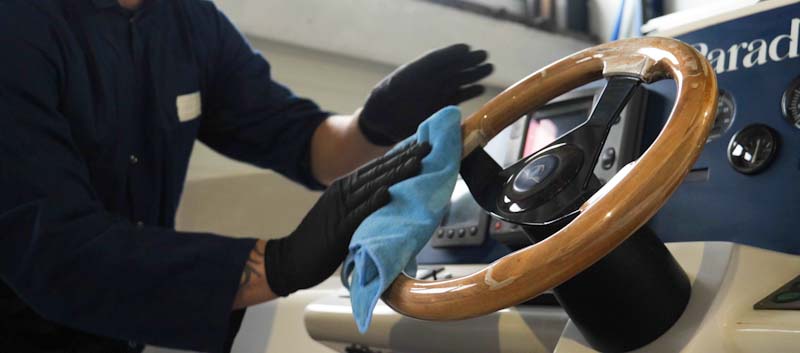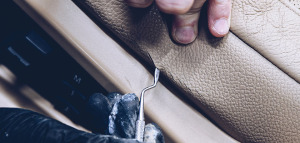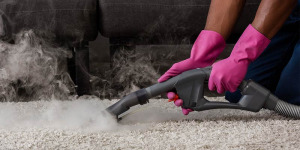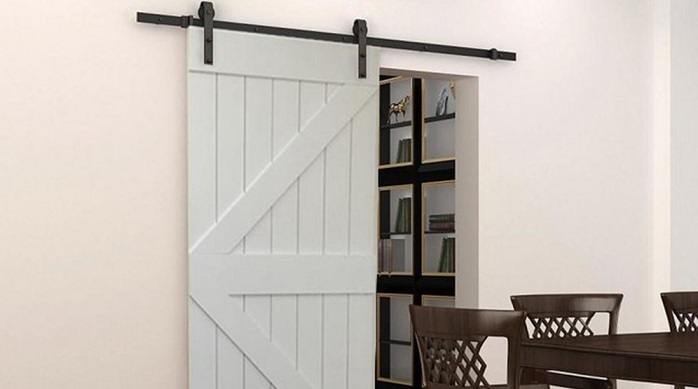
Boat seats looking like a mess? Learn how to clean marine upholstery the correct way, best cleaner for boat upholstery, plus tips for preventing mildew & mold.
There are many great products available on the market today to help any boat owner clean their vessel. But one of the best ways of keeping a boat’s upholstery clean is to prevent mildew from forming in the first place. If we take active steps to prevent the formation of mildew and mold, we are able to spend more time on the water, and less time cleaning up afterward.
In saying that, sometimes we just need to give it a good clean, regardless of whether it is dirty due to mold, fish residue, dust or what have you.
In this article we explain how to clean boat upholstery properly, and the best cleaner for boat upholstery. We also discuss what products to never use when cleaning boat upholstery (and worst), plus tips to prevent the formation of mold and mildew in future.
How to Clean Boat Upholstery
When it comes to actually cleaning the boat upholstery, here are the steps that you can follow. Adjust as needed to your own boat and the type of cleaner you have purchased (always read the label first, for specific instructions).
- Regularly rinse off all dirt and debris with fresh water (garden hose is good)
- Clean the upholstery with marine-grade upholstery cleaner (see below). Gently brush or wipe upholstery cleaner over the cushions. Don’t scrub too hard, let the cleaner do most of the work.
- Rinse the cushions off with fresh water, and dry with a shammy.
- Use a vinyl cleaner and restorer.
- Wipe everything down.
- Cover the boat or store it indoors (see tips below under ‘prevention of mildew’).
Best Cleaner for Boat Upholstery – Recommended Products
There are a number of excellent solutions to use in order to properly clean your boat. While there are a number of marine-grade products to choose from, sometimes the easiest option is to use plain old soap and water.
Soap and Water
One of the oldest tried and true methods for cleaning a boat is to simply use warm dish soap and water. This is the safest and easiest way to clean marine-grade vinyl. However, keep in mind that it will not do all the heavy lifting for you, as you will need to scrub in order to get it clean. As long as the vinyl is clean, you will only need to use this method every few weeks.
Marine 31
Marine 31 – Visit Product Website
When it comes to cleaning off years of mold, Marine 31 is one of the best options available on the market today. So long as the marine-grade vinyl is not damaged by the sun, with a little bit of elbow grease, you can get just about any mold or mildew staying off of your boat’s upholstery. If the vinyl is sun damaged or cracked, then it’s best to have it replaced as soon as possible. Once the vinyl reaches this state, it starts to degrade at a faster rate.
3M Vinyl Cleaner
3M Vinyl Cleaner – Visit Product Website
One of the most popular cleaners available on the market today is a good old-fashioned 3M Vinyl Cleaner. It is perfectly safe for use on Marine grade vinyl. It is safe to use on your boat, and it’s also capable of extending the life of your boat’s vinyl, by adding a protective layer to the surface.
303 Marine & Recreation Aerospace Protectant
303 Marine & Recreation Aerospace Protectant – Visit Product Website
Another great option is to use 303 Marine & Recreation Aerospace Protectant. 303 Marine offers a wide variety of cleaners and protectants that are perfect for use on marine-grade vinyl. When used properly along with other common mold and mildew cleaners, you can keep even an older boat looking brand-new.
Malco Leather Plastic Cleaner
Malco Leather Plastic Cleaner – Visit Product Website
If you want to clean your boat like the professionals, then you need to use the Malco Leather Plastic Cleaner. Not only is this particular product specifically designed for exterior use, but it is perfectly safe for use on marine-grade vinyl. In fact, many of the professionals in the industry use Malco on a regular basis in order to keep expensive yachts looking brand-new.
What NOT to Use
In mentioning all of the great products that you can use to keep your boat’s vinyl clean, it’s also imperative to point out the things that you should never use to clean any part of the boat’s vinyl.
Power Washer
After spending a day out on Lake, the first thing most boat owners do is to spray down their boat with a pressure washer. Naturally, since the vinyl is waterproof, most boat owners also power wash the upholstery. A power washer uses high pressure to clean surfaces, and that pressure can be way too much for the material itself. In fact, it can easily rip the vinyl and destroyed the foam inside.
Magic Eraser
Magic Eraser may seem like an excellent option simply because of how well it removes scuff marks and dirt from just about any surface. But, because it is so good at removing grease and oil-based contaminants from a surface it is also just as good at removing the protective layer from the surface of your boat’s vinyl.
Degreasers
Degreasers may be great and they can just about anything look clean, but they are also very strong. When used, they quickly clean up the surface of the vinyl, removing all of the dirt, grime, mildew, and mold, as well as the protective layer. Over time, degreasers will eventually weaken the material, or damage it.
Bleach
When used in moderation, bleach can actually be a good cleaner for most boats. You should never use a concentration of greater than 10% on your vinyl. If the concentration is too high, then bleach can be a very corrosive cleaner, that will quickly degrade and damage your vinyl.
Goo B Gone
Goo B Gone is great at removing just about anything from the surface, but it should not be used for boat vinyl. Like most of the other products mentioned in this list, Goo B Gone is great at removing the protective coating from the boat’s marine-grade vinyl.
409
For decades, people have used 409 to clean every surface of their boats. There is a common misbelief that 409 will not cause any real damage. But, it is still a very harsh chemical that can easily remove the protective layer from the upholstery. In the end, it will do more damage than good.
Gasoline
Gasoline will clean just about anything, as long as you don’t mind the fact that it’s flammable and stinks. It’s a readily available product that has many versatile functions, but, it is way too harsh to use on marine upholstery.
Household Cleaners
Just about every single type of household cleaner is designed to be extremely strong in order to be extremely effective. While they may seem the perfect choice for taking care of heavy mildew or mold stains, they are way too strong to use on marine-grade vinyl. Make sure to only use cleaners that are specifically made for marine upholstery.
Prevention of Mildew & Mold
While mildew and mold are not the only causes for dirty boat upholstery, they are some of the most common. Well, unless you’re dealing with a frequently-used fishing boat, in which case it’s probably mainly dirty due to bait residue, fish blood and scales (yeah, I know, I grew up on boats with two competition fisherman as parents). Not to mention the unpleasant residue left by seawater over time, as well.
But regardless, preventing mildew and mold is one way we can help keep boat seats clean, especially if you use your boat infrequently and keep it covered most of the time. In order to prevent mildew and mold from appearing, there are several things that any boat owner can do.
Find and Seal Leaks
The most important thing to keep in mind when it comes to the prevention of mildew is to prevent water from entering, to begin with. No matter how hard you try drying out the boat after each use if water is getting in, then those efforts will be in vain.
Take the time to check all the seals on a regular basis, especially in and around the hardware that penetrates the deck. Look at hatches, cleats, stanchions, vents, ports, bow rollers, win lasses, and more. If there is any water getting through the seals, then it’s important to remove the hardware and reseal the area. Pay close attention to through hall equipment such as bilge pumps and scuppers.
Use A Boat Cover
When the boat is not in use, don’t just leave it sitting in the yard. And while it may be tempting to save money and just use a standard tarp to cover the boat, water can still get in while it is sitting. Instead, try to use a proper boat cover in order to completely cover the boat when it’s not being used. Boat covers reduce the flow of air, and actively protect the boat from rain, which is important to keeping your vessel dry when not in use.
Use Proper Ventilation
Make sure that you have plenty of ventilation. It may not seem all that important, but stagnant air can hold a lot of moisture. As the temperature changes throughout the days and seasons, this can result in the buildup of condensation. Any area of the boat that is completely sealed off, creates the perfect breeding ground for mildew. Instead, it’s important to make sure that the air is flowing through areas such as lockers, rooms, cupboards, bilge covers, and more. If possible, install additional passive vents to help the boat breathe. Solar fans may also help, especially since it doesn’t require any extension cords being run out to the boat to function.
Reduce humidity
No matter what you do it is important to make sure that you reduce the amount of humidity trapped inside the boat at all times. Wherever there is humidity, low light, and warm temperatures, mildew and mold will begin to multiply. While there are ways of reducing the humidity using powered devices, heaters and dehumidifiers are not the best options because they may cause fires. Every year, countless fires are caused simply by boat owners leaving a lit incandescent bulb inside the boat whenever it’s unattended.
Instead, try to use a chemical-based dehumidifier like calcium chloride. You can buy these chemical humidifiers just about anywhere, and they are excellent at absorbing moisture from the air. Likewise, if you live up north and have access to sidewalk deicer, then you can make your own dehumidifier so long as the deicer clearly states on label edits composed of calcium chloride. Ultimately, you can also use silica gel packets, but these will need to be changed monthly.
Keep it clean
In the end, you need to keep areas where the airflow is not fast enough, clean at all times. The moment that the area shows any sign of mildew or mold forming, you should clean it. A simple mixture of one part vinegar to three parts water is perfect for killing mold. A diluted solution of 10% bleach can also work, but be careful about using bleach because it can be too harsh for the boat.
Final Thoughts on Best Cleaner for Boat Upholstery and Tips
While prevention is always better than a cure, as they say, sometimes we just forget to take those preventative steps. And in a way, it’s the same case with a boat. Of course, preventing the build-up of mold and mildew is preferable to having to clean it off later, but we’re just human and sometimes we forget or don’t have time. Or maybe it’s not mold and mildew at all, perhaps it’s just the build-up over time of seawater residue, fishy fluids or sunscreen that give your boat upholstery that yucky, sticky feel.
Either way, luckily there are many cleaners for boat upholstery that can help you with the job. For a basic, quick clean the best cleaner for boat upholstery is simply plain soap and water. As a first step, try soap and water, and see if that does the trick for you. If a deeper clean is needed, then any of the other four products listed above will finish the job hopefully with relative ease.
If your boat upholstery is starting to show signs of cracking or tears, you might need to consider replacing your boat upholstery instead as no amount of cleaning will be able to restore it properly, and water may start to seep inside the cushion.
Author
-

Hey, I’m Sara, co-owner of NestKoo! I’m a graphic designer and professionally trained fine artist, with a Bachelor of Arts (Fine Art) majoring in Painting. I love being close to nature, sustainable living and bringing new life to old things. My specialty in NestKoo is DIY house painting, upholstery and furniture upcycling, where I bring my skills in fine art painting and contemporary design together into a practical home DIY context.
View all posts









